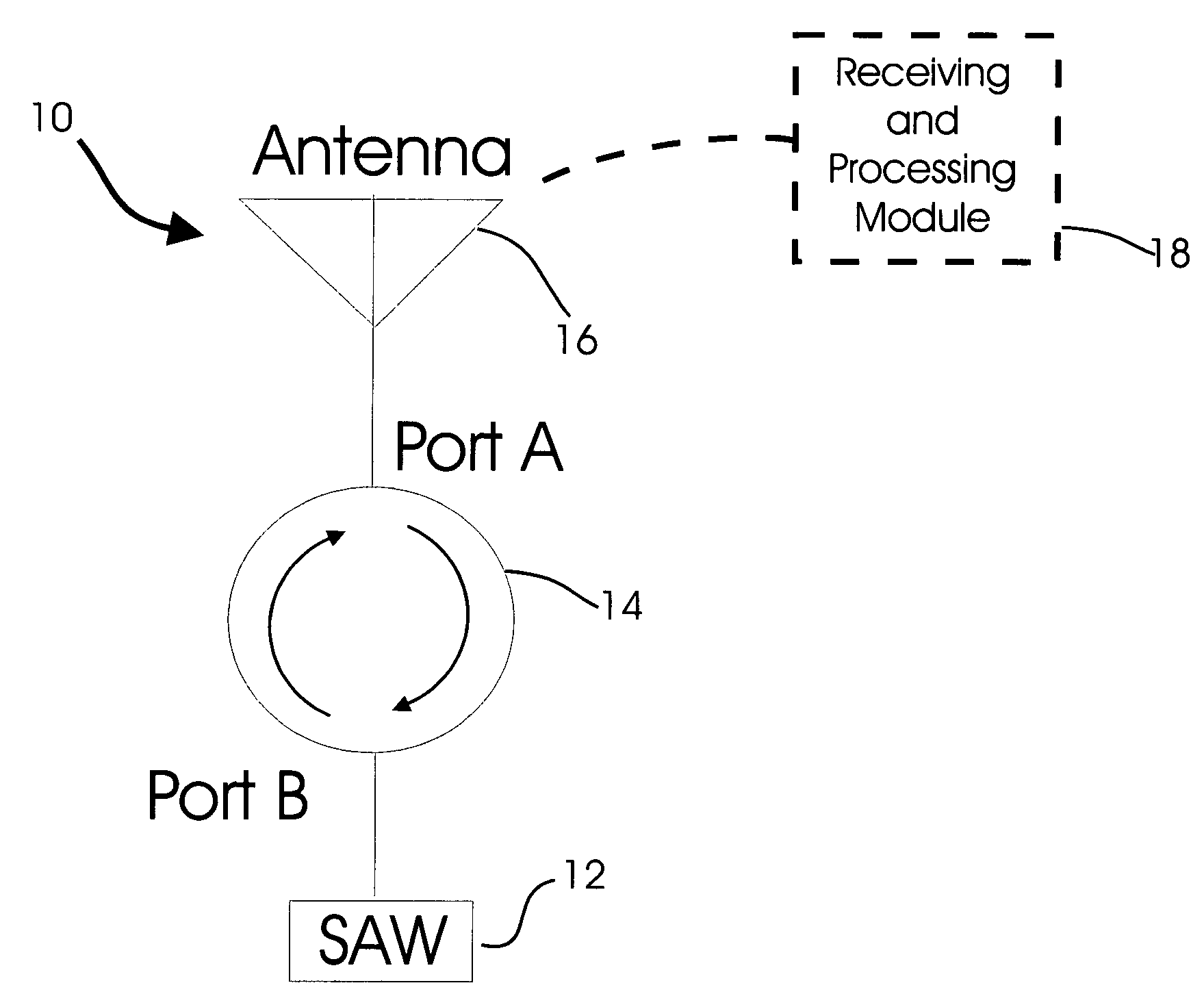Apparatus and method for boosting signals from a signal-generating or modifying device
a signal-generating or modifying device and apparatus technology, applied in the direction of functional valve types, instruments, transportation and packaging, etc., can solve the problems of affecting the stability and overall handling of the vehicle, and affecting the operation of the vehicle. , to achieve the effect of improving the pumping of air into the tir
- Summary
- Abstract
- Description
- Claims
- Application Information
AI Technical Summary
Benefits of technology
Problems solved by technology
Method used
Image
Examples
Embodiment Construction
1. Boosting Signals
[0096]Referring to the accompanying drawings wherein like reference numerals refer to the same or similar elements, an arrangement for providing a boosted signal from a SAW device is designated generally as 10 and comprises a SAW device 12, a circulator 14 having a first port or input channel designated Port A and a second port or input channel designated Port B, and an antenna 16 (see FIG. 1). The circulator 14 is interposed between the SAW device 12 and the antenna 16 with Port A receiving a signal from the antenna 16 and Port B receiving a signal from the SAW device 12.
[0097]In use, the antenna 16 receives a signal when a measurement from the SAW device 12 is desired and a signal from the antenna 16 is switched into Port A where it is amplified and output to Port B. The amplified signal from Port B is directed to the SAW device 12 for the SAW device 12 to provide a delayed signal indicative of the property or characteristic measured or detected by the SAW devic...
PUM
 Login to View More
Login to View More Abstract
Description
Claims
Application Information
 Login to View More
Login to View More - R&D
- Intellectual Property
- Life Sciences
- Materials
- Tech Scout
- Unparalleled Data Quality
- Higher Quality Content
- 60% Fewer Hallucinations
Browse by: Latest US Patents, China's latest patents, Technical Efficacy Thesaurus, Application Domain, Technology Topic, Popular Technical Reports.
© 2025 PatSnap. All rights reserved.Legal|Privacy policy|Modern Slavery Act Transparency Statement|Sitemap|About US| Contact US: help@patsnap.com



